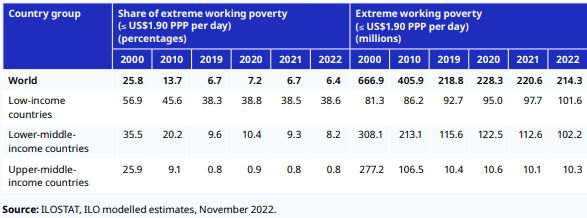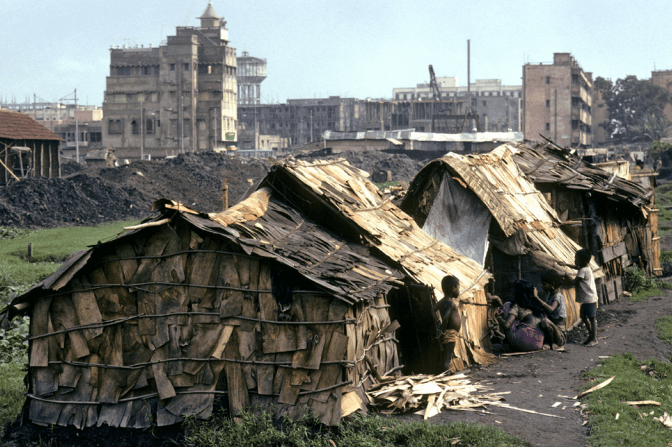The International Labor Organization (ILO) estimates that 214 million workers were living in extreme poverty in 2022.
This definition includes workers earning less than $1.90 per day per person in purchasing power parity (PPP) terms, which corresponds to approximately 6.4% of employed persons.
Extreme working poverty, 2000–22, world and by country income group

The ILO estimates that low-income countries have the same extreme working poverty rate as in 2019, and a growing number of working poor.
Without significant progress to break this stagnation, achieving the Sustainable Development Goal (SDG) – the eradication of poverty in all its forms – will be impossible.
As nominal labor incomes fail to keep pace with inflation, the cost-of-living crisis risks plunging more people into absolute or relative poverty, where «relative poverty» is equivalent to falling below a national poverty line.
This risk is especially high for those at the bottom of a highly unequal income distribution; the bottom half of workers worldwide earn only about 8% of total labor income.
Extreme poverty
Some 473 million people worldwide lack income from employment.
Among them are 205 million unemployed, i.e. people who meet the criteria of having recently looked for work and being available at short notice.
Then there are 268 million people who do not meet these requirements but have an unmet employment need.
Two billion of those who are employed are in informal work, which means they are much less likely to have rights at work, to have a voice through social dialogue, or to enjoy the benefits of social protection systems. This is especially true in rural areas.
Global labor income is very unequally distributed, with the bottom 50% of earners receiving only about 8% of global labor income.
This inequality is partly due to the huge gap in labor productivity: the gross domestic product (GDP) per worker in high-income countries is 18 times higher than in low-income countries.
Access to income support for those who become unemployed is also highly unequal around the world, with only 47% of the population covered by social protection.
![]()

